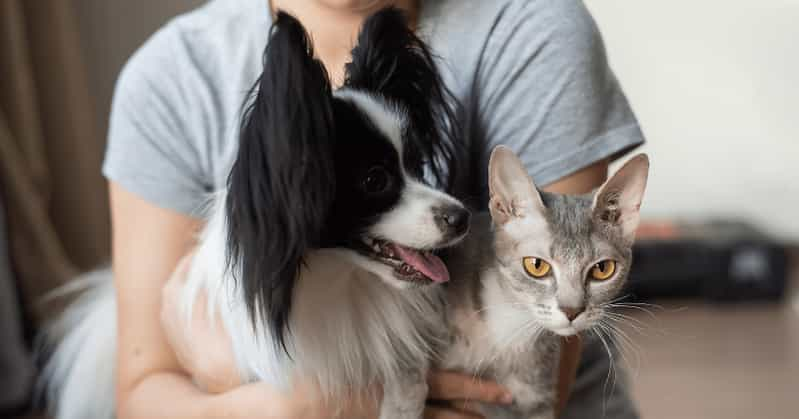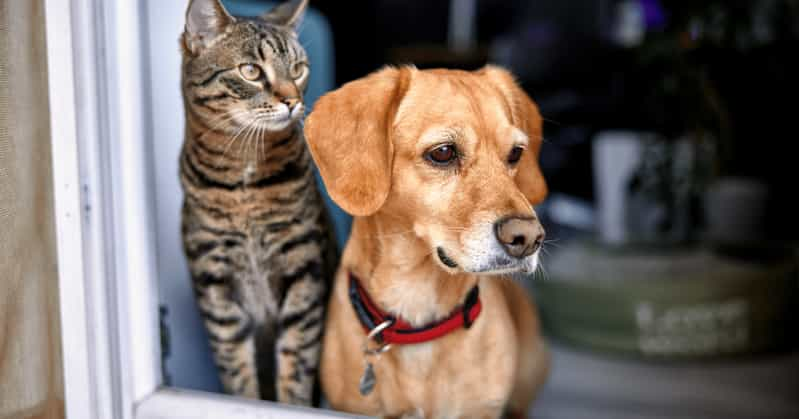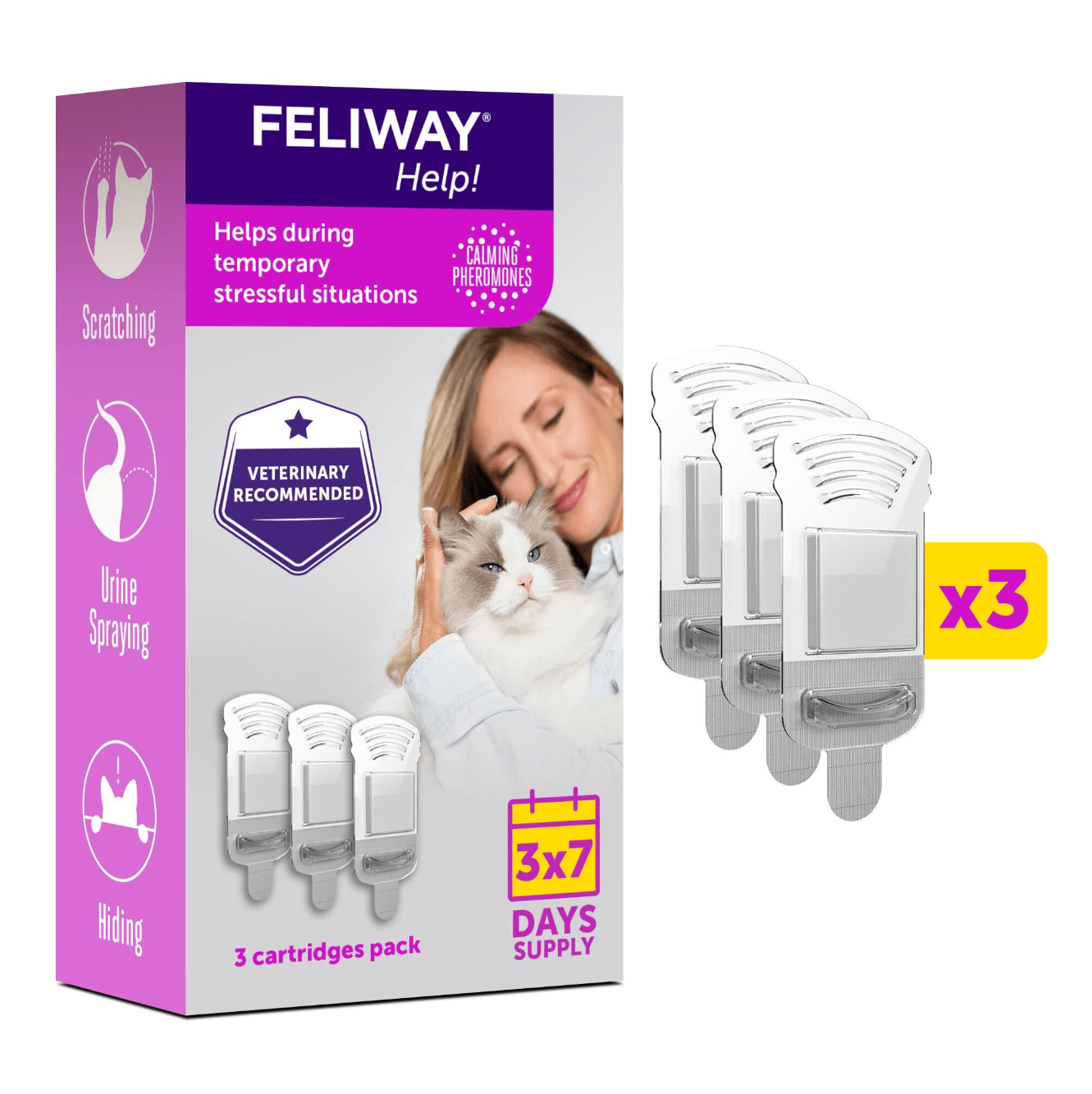
8 Tips to Help Cats and Dogs Get Along Together: A Kitty's Point of View
Meow! My name is Bella and I share my house with Buster the dog!
I've heard humans say that cats and dogs typically never get along, and it's true that sometimes cats like to tease dogs a little, I do like to chase Buster's tail as he walks by. But did you know we can be the best of friends? And that's true even though dogs can tease cats too, especially if they bark very loudly! When that happens I run away and hide because the noise scares me!
I'm lucky because my humans work very hard to make sure that Buster and I get along. Here are some tips that I know they use:
1. Don't ask us to share
Food
This is an important ground rule. Cats have different dietary requirements to dogs, we are carnivores and we need to eat meat to survive; we need to have the essential nutrients, Taurine and Arginine, that are found only in meat. Dogs need protein, carbohydrates, vitamins and minerals in different proportions to cats, so it's important that our food is served in different places.
Remember to put cat food up high, because sometimes dogs will eat anything they can get hold of, even though it's not for them!
Beds
I will confess that I do sometimes creep into Buster's bed because it is very cosy, but I do like to have my own bed too. When my humans first brought me home, they made sure that I had everything I needed and they put my bed up high because they know I like to have a safe place to go to if I feel anxious or stressed in any way. Buster's too big for my bed anyway!

2. Training
We know that dogs can be trained to do all sorts of things, but cats can be trained too!
If at all possible, bring dogs and cats together when they are young. Kittens and puppies are like sponges and the earlier they meet and are trained to live together in harmony, the better. They also get used to each other's scent which makes them feel more comfortable together.
It would be helpful too if you could train your dog not to chase or pester your cat!
3. Give us our own space
We are different species, so we like different things. Cats like to have places to hide if we are feeling uncomfortable, my favourite place to retreat to is under my human's bed. I know I can't be reached there, by humans or dogs. I will come out in my own time.
Dogs on the other hand can be territorial. Buster has his own favourite bed just by the radiator with his toys inside and he sometimes mumbles under his breath (growling, I think it's called) if I go near when he's sleeping. (As I mentioned earlier, I do have a quick catnap in there when he's not around though!)
My other favourite space is on top of the cupboard, nice and high so I can watch what's going on below, but I can't be disturbed.
Our humans also make sure that FELIWAY Optimum is plugged into the area where I spend the most time - it helps me feel very serene!
4. We each need one-to-one time with our humans
Our humans try to spend time with each of us separately. My designated play times are early in the morning or early in the evening, that's when I have a lot of energy. My kitty ancestors always used to hunt at these times, and domesticated cats are still the same.
Fortunately, Buster likes to go for walks during the day, so he is nice and tired when it's my turn to play with our humans.

5. Keep an eye on our body language
Be ready to step in if you think we might have a spat, dogs and cats have a different body language, so it's important to understand us both. Apart from cats meowing and dogs barking:
- If I blink slowly, it means that I'm smiling and I am pleased to see you; If Buster is pleased to see you, he runs around in circles and wants a lot of fuss made of him.
- If Buster growls, it's best to give him a wide berth as he's trying to warn you off; when I purr (which is a much softer growl), it means I'm happy.
- If you find us nose-to-nose, and I have my tail up or lie down next to Buster, we are feeling quite friendly towards each other. But remember to get to know our body language to recognise signs of conflict. It also helps to give us both the same attention and reward us for good behaviour, a nice treat goes a long way!
6. Signs that we are getting along
Buster and I get along quite well, given that we are a totally different species. If you want to know if your pets are getting along, look out for these signs:
- They are quite happy to be in the same room together, though your cat might choose to be up on a high shelf.
- Your cat doesn't run away whenever they see your dog.
- They snuggle up together for a snooze.
- If you find your dog licking your cat, it could mean that your dog is recognising your cat as the superior (of course we are!). Or it could be that you previously rewarded them for being kind - and they want another treat.
- Sometimes we even play-fight or chase and ambush each other. That's great fun, because I know that I can jump up onto a fence and Buster can't reach me. I always win!

7. Be prepared for us NOT to get along
It's OK if we are not best buddies. Dogs and cats have different communication styles and social structures so harmony is not guaranteed.
I will admit that an uncomfortable cat is more likely to cause disharmony than an uncomfortable dog.
However, if you are thinking about bringing a new dog into your home, and you already have a cat, there are certain things you can do to make the transition easier:
- Keep them apart and introduce them slowly.
- Ensure they have their own space with all their own resources.
- Never leave them alone together in an enclosed space. The cat must have an exit!
- Allow them to get used to each other's scent slowly.
- Choose the dog breed carefully! We don't always get on very well with these breeds:
- The Scottish Deerhound, Beagle and the Greyhound - they're hunters!
- The Samoyed - they look as if they are smiling, but believe me they're not and they like to chase cats!
It is perfectly acceptable if your home is peaceful, and that your cat and dog tolerate each other. You never know, one day you might find them curled up together!
8. Things to remember
Cats and dogs are totally different and this is reflected in our relationship.
- Dogs often want physical contact with a cat, just as they have with their humans. Cats are less interactive, but they can become more familiar with a dog over time and in the right environment.
- Cats will initially be apprehensive when a dog approaches them, whereas dogs are very sociable and will want to meet (or chase) immediately.
- Dogs being a more social species use a lot of body language to communicate, whereas us cats use a lot of scent communication (although we both rely on each option!)
- But both of us enjoy a bond with our humans - even though we show it in different ways.
If you follow these tips, your cat and dog might get along just fine - just like me and Buster!




































